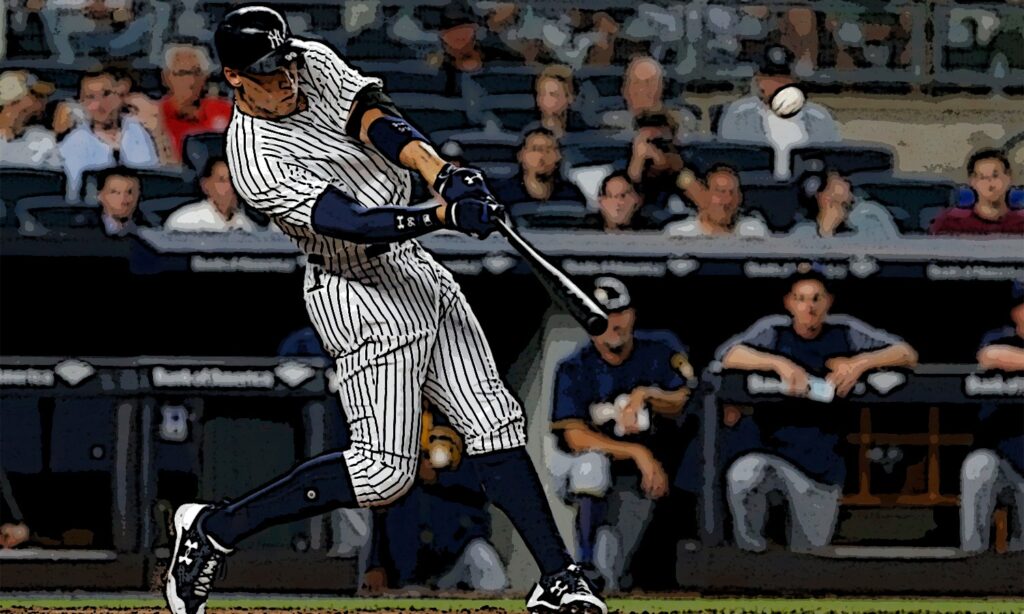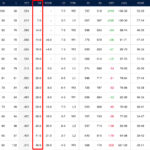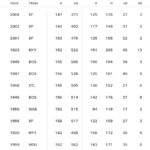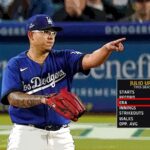When it comes to baseball, fans are accustomed to seeing 3 stats displayed on the screen for every player at-bat.
The stats I’m speaking of are their batting average, home runs and RBIs.
Home runs and RBIs gives you a sense of the player’s power and score contribution.
The batting average gives you an idea of their hitting success over the course of the season. When they’re hovering a 0.300 AVG, you’re looking at a good hitter.
But batting stats are not limited to these three categories. There is an extended set of stats to measure their efficiency at-bat.
One of those is the Slugging Percentage, abbreviated as SLG in the official MLB Hitting stats.
Slugging is related to the word “Slugger”, which is a batter who consistently hits for power.
The reality is that a player can potentially have a high slugging percentage without necessarily being a power hitter.
The caveat is that they’d need to be an extremely efficient hitter.
That said, let’s answer the question you came here for…
What is Slugging Percentage in Baseball?
Slugging Percentage is the number of bases a player safely reaches per at-bat. The recorded value only factors in hits, while excluding walks and hit-by-pitches in the calculation. The main difference between slugging percentage and batting average is that hits are not treated equally.
For example, when a player hits a home run, they’ve covered four bases in a single at-bat.
A single would only result in one base attained at-bat.
The player would increase their batting average percentage equally, regardless of the type of hit, even though they vary in strength.
Note that the home run guarantees an additional point on the scoreboard, while a single does not.
The only way a single drives in a run is if there are other runners already on base, or if the fielding team commits a string of errors on the play.
Meanwhile, the slugging percentage will take into considering each base the player successfully crosses during their at-bat.
Typically, your hardest hitters dominate the Slugging Percentage leaderboard.
What is a good Slugging Percentage in Baseball?
Since 1876, the average slugging percentage has fluctuated between the 0.300 and 0.440 range.
As of the last decade, the average SLG has hovered around the 0.400 range while peaking to 0.435 in 2019.
Anything above 0.400 SLG is my starting point for good slugging percentage.
So, I decided to dig a little deeper to see how the league balances out.
The clearest sign that a player will finish the season with a strong slugging percentage is if they are hitting above 0.300 in batting average with a high home run count.
As an example, take Barry Bonds’ numbers from 2001.
He managed a record-breaking 73 home runs, along with a 0.328 AVG while appearing 476 times at-bat.
While his home run record attracted the most buzz, he also set the record for best slugging percentage with 0.863.
Again, that means he safely stepped on any base 86.3% of his chances at-bat.
Highest Slugging Percentage
The highest slugging percentage any player can earn at-bat is a 4.000, which is a home run.
In reality, there is no player that will consistently hit a home run each at-bat, let alone reach base each time.
Players are going to strike out, ground out, pop out – you name it.
In fact, the average player is a 3-1 underdog at hitting the ball throughout their career.
The best slugging percentage a player has managed was a 3.000. The record is shared amongst 5 players.
Each one hit a triple for their only at-bat.
If you’re going to be a one-and-done player in Major League Baseball, make it count.
As mentioned earlier, the best slugging percentage belongs to Barry Bonds at 0.863.
Prior to that, the record belonged to Babe Ruth with an 0.847 SLG. This record stood for 81 years (since 1920).
Top 10 MLB Slugging Percentages
| Player Name | Year | Home Runs (HR) | Batting Average (AVG) | Slugging Percentage (SLG) | |
|---|---|---|---|---|---|
| 1 | Barry Bonds | 2001 | 73 | 0.328 | 0.863 |
| 2 | Babe Ruth | 1920 | 54 | 0.376 | 0.847 |
| 3 | Babe Ruth | 1921 | 59 | 0.378 | 0.846 |
| 4 | Barry Bonds | 2004 | 45 | 0.362 | 0.812 |
| 5 | Barry Bonds | 2002 | 46 | 0.370 | 0.799 |
| 6 | Babe Ruth | 1927 | 60 | 0.356 | 0.772 |
| 7 | Lou Gehrig | 1927 | 47 | 0.373 | 0.765 |
| 8 | Babe Ruth | 1923 | 41 | 0.393 | 0.764 |
| 9 | Rogers Hornsby | 1925 | 39 | 0.403 | 0.756 |
| 10 | Mark McGwire | 1998 | 70 | 0.299 | 0.752 |
How to calculate Slugging Percentage in Baseball?
The formula for calculating the slugging percentage is quite simple.
You’ll need the following stats at your disposal:
AB - Player At-Bats
H - Hits
2B - Doubles
3B - Triples
HR - Home Runs
The official MLB stats do not display Singles hit. So, you’ll need to subtract all doubles, triples and home runs from the total Hits.
Once you compile all those numbers, you can plug them into the following formula:
SLG = [(1B) + (2 x 2B) + (3 x 3B) + (4 x HR)] /AB
Example: In 2022, Aaron Judge achieved the following hit totals and presence at-bats:
AB - 570
H - 177
2B - 28
3B - 0
HR – 62
His Singles count was:
1B = H – 2B – 3B – HR
1B = 177 – 28 – 0 – 62 = 87
SLG = [(1B) + (2 x 2B) + (3 x 3B) + (4 x HR)] /AB
SLG = [(87) + (2 x 28) + (3 x 0) + (4 x 62)/ 570
SLG = [87 + 56 + 0 + 248] / 570
SLG = 0.686 or .686
Along with hitting the most home runs on the season (62), Judge managed the top slugging percentage.
Now you understand why home run hitters are nicknamed “Sluggers”.
When these players hit the ball, they are a serious threat to inflict maximum damage to their opponents.
Final Thoughts
The MLB consists of a treasure-trove of stats to compare teammates and players across the league.
Just like other sports, management can use the data for analytics and evaluate individual player efficiency in the league.
The goal is to increase your team’s ability to score runs, win games and ultimately qualify for the post-season.
Slugging Percentage is the best way to evaluate a player’s ability to generate offense by getting on-base.
If the player is a consistent home run hitter, even better. There’s less worry of leaving runners stranded on-base.
So, not only do they bring home their base runners safely, but they also score themselves on the play as well.
A solid slugging percentage is great ingredient for a winning recipe.






